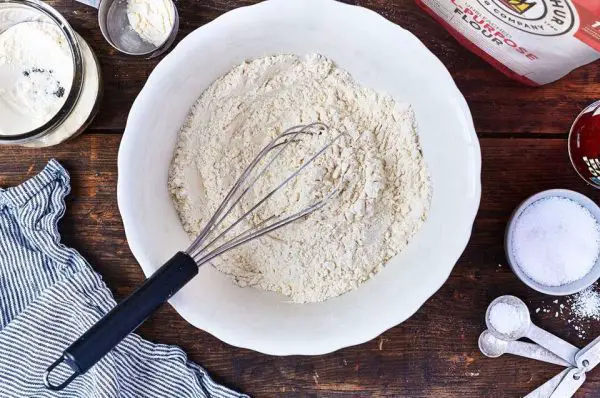
Self-Rising Flour Recipe
Self-rising flour recipe is a magical ingredient in the kitchen, saving time and simplifying recipes that need a fluffy, light texture. Whether you’re whipping up pancakes, biscuits, or cakes, self-rising flour can make the process quicker and more foolproof. But what if you don’t have any on hand? No worries! With just a few simple ingredients, you can make your own self-rising flour at home.
This article will walk you through an easy self-rising flour recipe, give you some background on its origins, and show you how to use it in various dishes. Plus, we’ll answer your burning questions about this pantry staple.
A Brief History of Self-Rising Flour Recipe:
Self-rising flour dates back to 1845 when Henry Jones, a British baker, patented the formula. He combined regular flour with baking powder and salt, creating a blend that produced consistent, high-quality baked goods. It became an instant success, especially in maritime kitchens where fresh bread was a challenge to bake. Today, it’s a household favorite, particularly in Southern cooking, for its ability to make biscuits and other baked goods effortlessly light and fluffy.

Self-Rising Flour Recipe
Equipment
- Measuring cups and spoons
- Mixing bowl
- Whisk or fork
Ingredients
- 1 cup (120g) all-purpose flour
- 1½ teaspoons baking powder
- ¼ teaspoon salt
Instructions
- Measure Your IngredientsStart by measuring out 1 cup of all-purpose flour, 1½ teaspoons of baking powder, and ¼ teaspoon of salt. Accuracy is key for consistent results.
- Combine the IngredientsIn a mixing bowl, add the flour, baking powder, and salt.
- Mix WellUse a whisk or fork to thoroughly combine the ingredients. Ensure the baking powder and salt are evenly distributed throughout the flour to avoid uneven rising.
- Store or Use ImmediatelyIf you’re not using the self-rising flour immediately, store it in an airtight container in a cool, dry place. It will stay fresh for up to 3 months
Video
Similar Recipes to Explore:
Buttermilk Biscuits
A classic Southern recipe that thrives with self-rising flour. Light, fluffy, and buttery!
Pancakes
Self-rising flour makes pancakes extra fluffy with minimal effort.
Banana Bread
Swap regular flour for self-rising flour in your favorite banana bread recipe for a lighter texture.
Scones
Use self-rising flour for quick and tender scones—perfect with jam and clotted cream.
Fried Chicken Batter
Self-rising flour creates a crispy and light coating for fried chicken.
Frequently Asked Questions About Self-Rising Flour Recipe:
1. What is self-rising flour?
Self-rising flour is all-purpose flour with baking powder and salt already mixed in, making it ideal for recipes requiring leavening.
2. Can I substitute self-rising flour for all-purpose flour?
Yes, but you’ll need to adjust the recipe by reducing or omitting added baking powder and salt.
3. What happens if I use self-rising flour in a recipe that calls for plain flour?
The dish may become overly salty or rise too much, altering the texture and flavor.
4. How should I store homemade self-rising flour?
Keep it in an airtight container in a cool, dry place to prevent clumping or loss of potency.
5. Can I make gluten-free self-rising flour?
Absolutely! Use a gluten-free all-purpose flour blend as the base and follow the same proportions.
6. Does self-rising flour expire?
Yes, like regular flour, it can spoil over time. Use it within 3 months for the best results.
7. Can I use self-rising flour for bread?
Not typically, as most bread recipes require yeast for leavening, but it works for quick breads.
8. Why is my self-rising flour not working?
Check if your baking powder is expired; it might no longer be effective.
9. How can I make large batches of self-rising flour?
Multiply the ingredients proportionally based on how much you need. For example, for 4 cups, use 4 cups of flour, 6 teaspoons of baking powder, and 1 teaspoon of salt.
10. Is self-rising flour healthier than all-purpose flour?
Not necessarily; the nutritional profile is similar. It’s more about convenience than health benefits.
Conclusion:
Making self-rising flour at home is a simple and practical solution when you’re in a pinch. With just three ingredients, you can create a versatile pantry staple that works wonders in countless recipes. From biscuits to banana bread, the possibilities are endless. Now that you know the secret, why not try it in your next baking adventure?
YouTube Video Credits:
Tastefully Shay

Leave a Reply